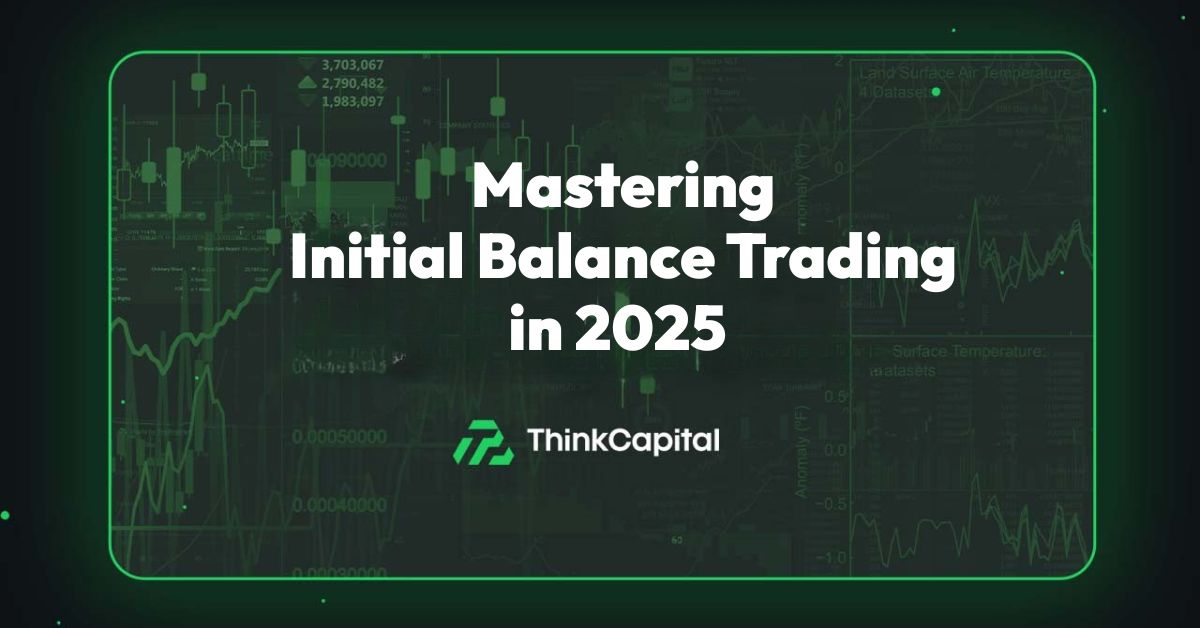Initial balance trading is a powerful trading strategy that helps traders navigate market dynamics effectively by analyzing the crucial first hour of a trading session. If you’ve ever wondered how professional traders gain valuable insights into market sentiment, price movements, and potential trading opportunities right at the market open, then understanding initial balance trading is your answer.
What Exactly Is Initial Balance Trading?
The concept of initial balance refers to the price range established within the first hour after the market opens, known as the initial balance period. This initial balance range acts as a reference point for traders throughout the trading day. This offers valuable insights into market sentiment and dynamics. Originally part of the Market Profile technique, the initial balance is now widely used by traders in various markets. These include futures, stocks, and forex.
Why IB Matters in Trading Strategies
When the trading session kicks off, especially within the first trading hour, market activity spikes, and trading volumes soar. Institutional investors and experienced traders actively place significant trades during this initial period, influencing market sentiment significantly. Consequently, the initial balance high and initial balance low become critical indicators, determining potential resistance and support levels for the day.
For instance, a narrow initial balance range combined with lower trading volumes can signal a potential upcoming trend. This setup often suggests that the market is preparing for a stronger directional move. This presents excellent breakout opportunities. Conversely, a wide initial balance range combined with high volume typically suggests that prices may stay within that range. This often indicates sideways market activity rather than a strong trend.

How to Determine the Initial Balance
Identifying the initial balance is straightforward. On your trading chart, look at the highest and lowest price points established during the first hour after market opens. For example, if you’re trading the stock market, the initial balance indicator captures the highest and lowest prices recorded between 9:30 AM and 10:30 AM EST. This one-hour window helps define the day’s early range.
If you’re a forex trader, the initial balance period often aligns with the first hour of a major trading session. For EUR/USD, this is typically from 8:00 AM to 9:00 AM EST, marking the start of the New York session when trading volume picks up significantly.
Integration with Market Profile
Market Profile is a visual representation that captures trading volumes and price action throughout the day. This helps traders identify key levels such as resistance levels and support points. The initial balance area marked on a Market Profile chart offers an immediate visual understanding of the market dynamics, providing clarity about market sentiment.
For example, when price action breaks above the initial balance high with significant trading volumes, it can be seen as a strong signal. In such cases, traders may consider entering a long position, anticipating continued upward momentum. Conversely, a breakout below the initial balance low often signals bearish sentiment, prompting traders to either short or exercise caution.

Real-Life Example of Initial Balance Trading
Let’s imagine a scenario where the IB for the S&P 500 futures is established between 4,150 (initial balance low) and 4,170 (initial balance high). If the price breaks above 4,170 with high volumes shortly after the first trading hour, it signals strong bullish market activity, providing traders with a high probability trading opportunity to enter a long position. Conversely, a break below 4,150 indicates bearish sentiment, suggesting a potential short position.
Leveraging Initial Balance for High-Probability Trading Opportunities
Initial balance trading helps traders identify high probability scenarios through the analysis of early market activity and trading volumes. Key levels established during the initial balance period serve as reliable benchmarks for planning trading strategies, managing risks, and setting realistic profit targets.
Traders can use other similar tools, such as volume analysis or trend indicators, alongside initial balance for increased effectiveness. By combining initial balance with price action analysis and understanding market sentiment, traders can significantly improve their trading performance.

Frequently Asked Questions (FAQs)
Q: What is initial balance trading?
A: It involves analyzing the price range established during the first hour of a trading session to gauge market sentiment and identify trading opportunities.
Q: Why is initial balance important?
A: It provides critical insights into market dynamics, setting resistance and support levels, and helping traders predict potential price movements.
Q: How do you identify initial balance?
A:This is identified by noting the highest and lowest price points recorded during the first hour of the trading session.
Q: Is initial balance trading suitable for beginners?
A: Yes, initial balance trading is beginner-friendly and straightforward, making it easy for novice traders to incorporate into their trading strategies.
Q: Can initial balance be used across all markets?
A: Yes, initial balance trading can effectively be used in various markets, including stocks, futures, and forex.

Final Thoughts
Initial balance trading provides traders with a robust framework for understanding market sentiment, analyzing price movements, and spotting high-probability trades. Although highly effective, it’s essential to integrate it into a broader trading strategy involving price action, volume analysis, and careful risk management. By mastering initial balance trading, traders can significantly enhance their market performance and achieve consistent trading success.

Disclaimer
Trading involves high risk, and retail investor accounts can lose money rapidly due to leverage. This article is for educational purposes only and should not be considered financial advice. Always do your own research and consider your financial situation before making any investment decisions. Effective risk management is essential in Forex trading to protect your capital and manage risk appropriately.





